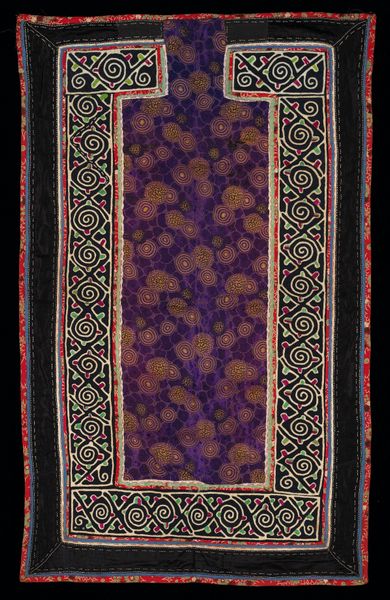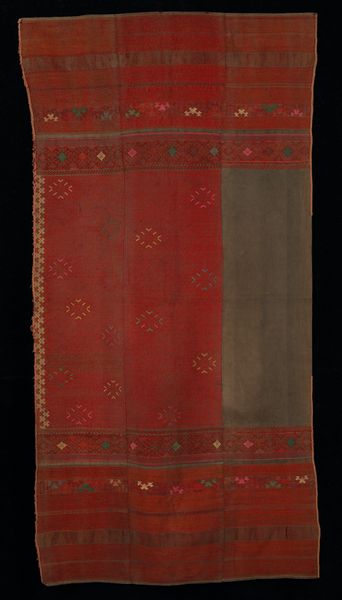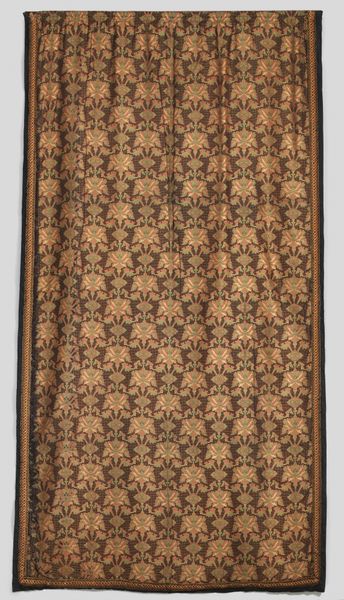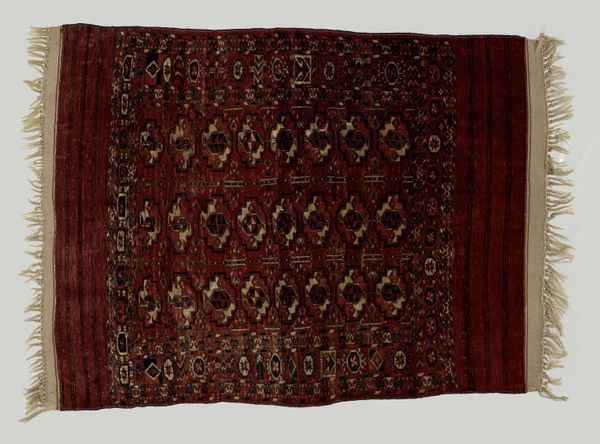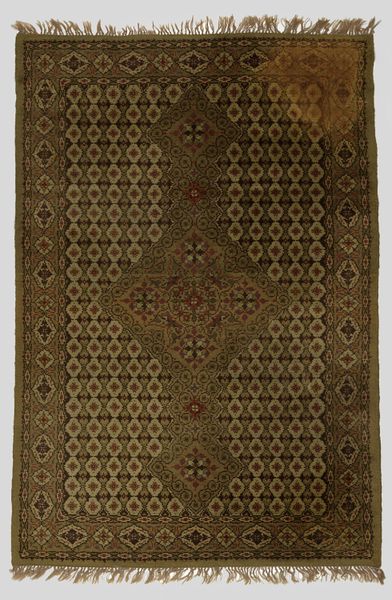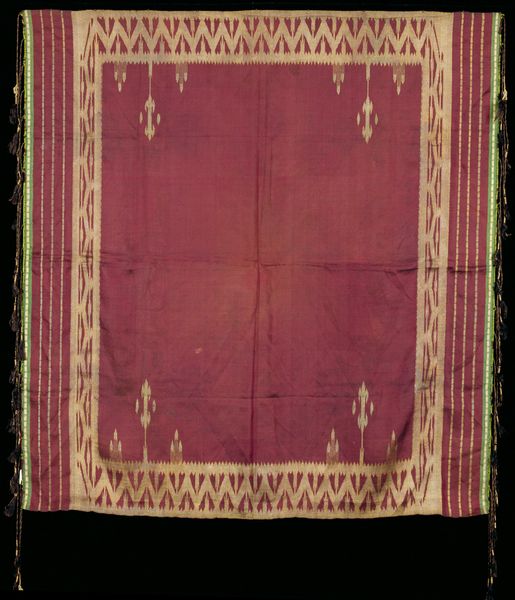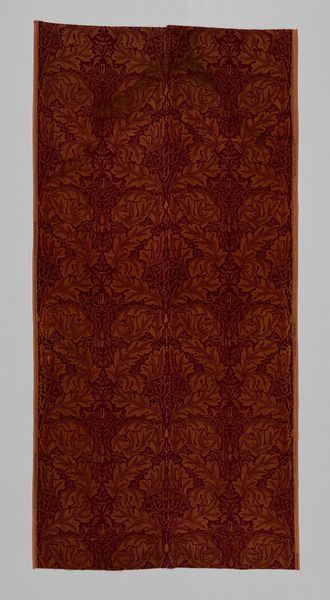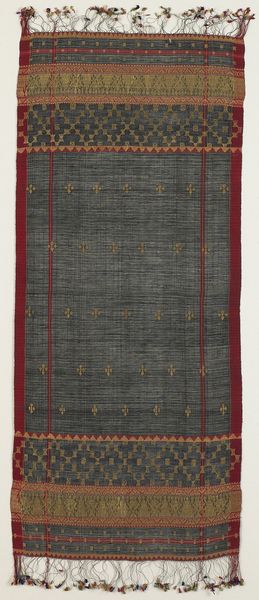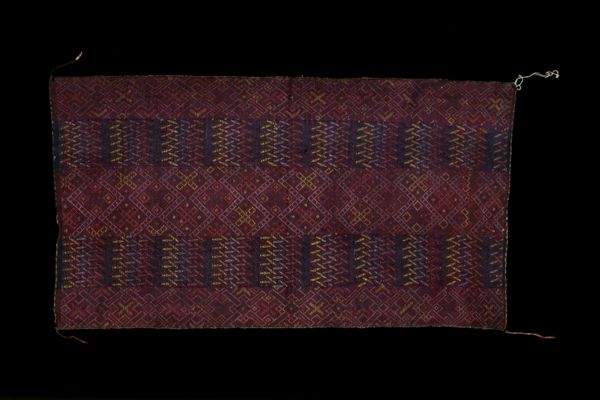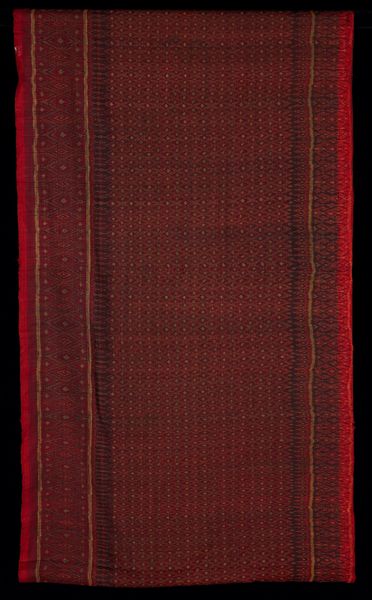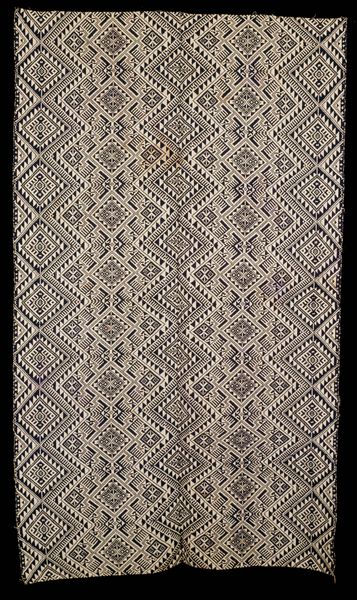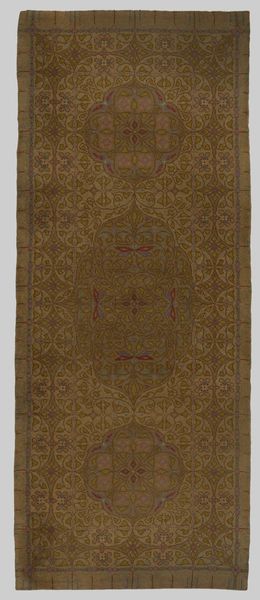
Cloth for woman's veil (Telia dupatta) or man's waist wrap (Telia lungi) late 19th-early 20th century
0:00
0:00
fibre-art, weaving, textile, cotton
#
fibre-art
#
weaving
#
textile
#
geometric pattern
#
geometric
#
cotton
Dimensions: 109 1/2 x 47 5/16 in. (278.13 x 120.17 cm)
Copyright: Public Domain
This textile, known as Telia Rumal, served as a cloth for a woman's veil (Telia dupatta) or a man's waist wrap (Telia lungi). It comes to us from an anonymous maker. The painstaking process used to create this cloth involved treating the cotton fibers with oil—tel in Hindi—for weeks prior to dyeing. These cloths were historically traded from India to communities in the Middle East, Africa, and Southeast Asia. The creation of the Telia Rumal reflects the economic and social dynamics of its time. The gendered use of the cloth also signals how clothing can function as a marker of identity and social status. The grid-like pattern and deep red borders speak to the ways in which textiles are a cross cultural form of visual communication. Textiles like this were integral to the cultural and economic exchanges that shaped the pre-modern world. They remind us of the rich, complex histories woven into everyday objects.
Comments
minneapolisinstituteofart almost 2 years ago
⋮
This cotton ikat fabric is from an unused stockpile of similar telia cloth - so-called because the traditional dyeing process involved treating the threads with sesame oil (tel). Produced in the southeast Indian coastal town of Chirala, telia cloth found a ready market in Hyderabad, the area's main trade center. The fabric, often decorated with white embroidery, made an attractive head covering for women. Men wore it plain as a waist wrap.
Join the conversation
Join millions of artists and users on Artera today and experience the ultimate creative platform.
